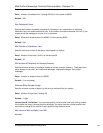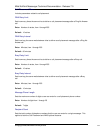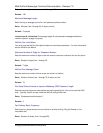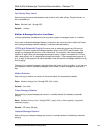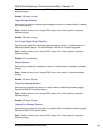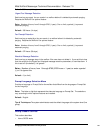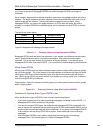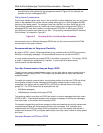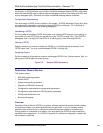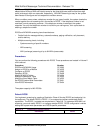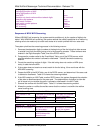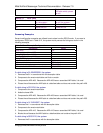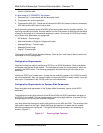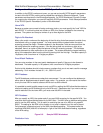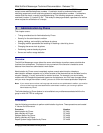
Mitel NuPoint Messenger Technical Documentation - Release 7.0
• Bitmapped GCOSs are useful when you need to develop complex relationships. The
communication links required for the arrangement shown in Figure 8-3, for example, are
possible only with a bitmapped GCOS.
Dial-by-Name Considerations
Even though mailbox owners may all be in the same Dial-by-Name database, they can only reach
others in the database if they share either the same affinity group or if their bitmapped GCOSs
have any of the same groups. For example, Jane Doe, Lee Bau, and John Smith are all in the
Dial-by-Name database, but Jane’s mailbox and Lee’s mailbox are configured with GCOS 1, a
bitmapped GCOS, and John’s mailbox is configured with GCOS 65, an affinity group GCOS.
Jane and Lee can reach each other but not John. This grouping, sometimes called “Partitioned
Dial-by-Name,” is illustrated in Figure 8-5.
Figure 8-5 Grouping Within the Dial-by Name Database
Jane and Lee can be in different bitmapped GCOSs but can still communicate if both GCOSs
include each of their group numbers.
Recommendations for Degrees of Flexibility
By default, GCOS 1 has all 128 groups defined, giving a mailbox with this GCOS the maximum
flexibility in exchanging messages. It is recommended that you do not alter this GCOS.
It is also recommended that you create GCOS 2, but define no groups for it. This “empty” GCOS
is useful in restricting the capabilities of a mailbox. It is also used to enable one-way
communication, as described below.
One-Way Communication Using an Empty GCOS
Though you can prevent contact between users, you can allow them to receive certain kinds of
messages, using an empty GCOS. For example, you probably want to notify users before a
system shutdown.
To enable this one-way communication, an originating mailbox must have an FCOS that allows
the originating mailbox to make messages and allows the mailbox owner to make or give
(messages) to a mailbox with an empty GCOS, a GCOS you defined without including any
groups in it. The FCOS feature bits to accomplish this are:
• 020 (Make messages)
• 126 (Make/give to mailbox with empty GCOS)
The receiving mailbox must have an FCOS that allows it to receive messages from other users
(FCOS bit 040). These features enable a user to make a message, as well as give messages
from other users, to the mailbox with the empty GCOS.
For example, suppose the local phone company notifies an answering service that maintenance
on buried phone cables will disrupt service for two hours next week. If all customers have
mailboxes with the FCOS and empty GCOS just described, and if the system administrator’s
mailbox has the same FCOS, the system administrator can notify users in advance of the system
shut down.
Interaction Between a GCOS and FCOS
©
Copyright 2002, Mitel Networks Corporation 124



